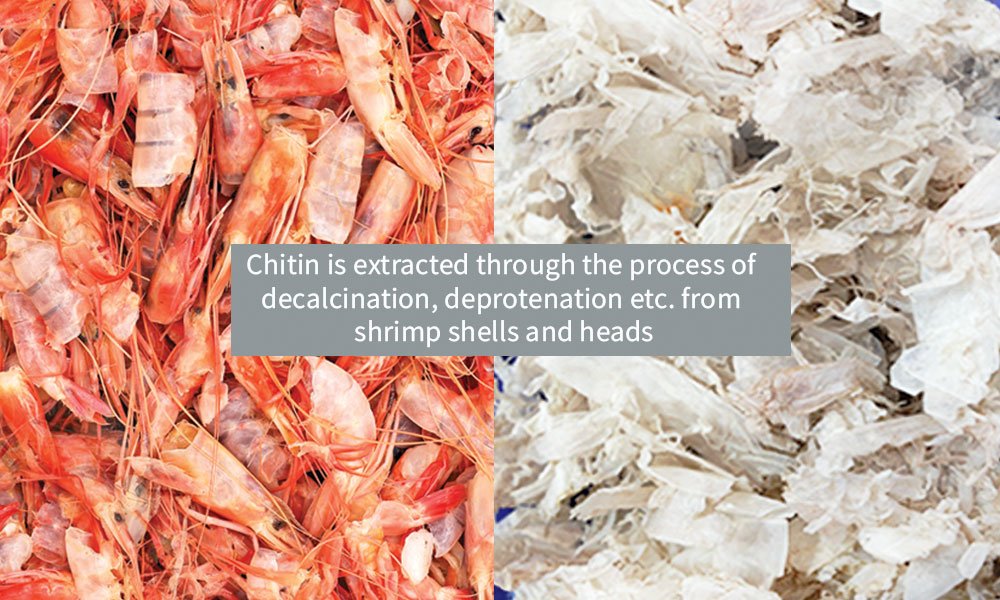Shrimp is one of the most abundant available raw materials for synthesis of Chitin and its derivatives. Due to the wide availability of this raw material, demand for these products has increased recently. The global chitin and chitosan market is expected to reach $4.2 billion by 2021 from $2.0 billion in 2016 at a compound annual growth rate (CAGR) of 15.4%, from 2016 to 2021.
Shrimps are mostly exported in frozen conditions that have undergone a process of separation of the head and skin. The crude shrimp head and skin materials have a very low economic value and are treated as bio-waste or sold to animal feed manufacturers. This industry generates large amounts of shrimp bio-waste during processing, approximately 45-55% of the weight of raw shrimp. This bio-waste can be used to produce value-added products such as Chitin and Chitosan.

Chitin is extracted from shrimp shells by demineralization and deproteinization procedures. Subjecting this further to the deacetylation process resulted in synthesis of Chitosan.
- Demineralization:
Demineralization of shrimp shells can be carried out using HCI (concentration 2-4%) at ambient temperature (28 ± 2°C) with a solid to solvent ratio 1:5 (w/v) for 16 hours. The residue obtained was washed and soaked in tap water until neutral pH.
- Deproteinization:
Deproteinization of the shrimp shell was done with 4% NaOH at ambient temperature (28 ± 2°C) with a solid to solvent ratio 1:5 (w/v) for 20 hours. The residue was washed and soaked in tap water until neutral pH. Then purified chitin was dried until it became crispy. Chitin flakes were grounded to small particles to facilitate deacetylation.
- Deacetylation:
Removal of acetyl groups from chitin was carried out using NaOH (concentration 30% – 60%) at 65°C temperature with a solid to solvent ratio 1:10 (w/v) for 20 hours. The residue was washed until neutral pH with tap water. The resulting chitosan was then dried at cabinet dryer for 4 hours at 65 ± 5° C and further characterised.
Other methods for chitin preparation include enzymatic reactions, and microbial fermentation. Conventional chemical extraction of chitin requires strong acids and alkali to eliminate minerals and proteins. But, using these harsh chemicals is detrimental to the environment. In addition, although enzymatic reactions and microbial fermentation methods avoid this drawback, the incomplete elimination of minerals and proteins limits the application of these methods.
To overcome this drawback, recently, chitin extraction by ionic liquids (ILs) from crustacean shells has been reported as an alternative method. However, the main disadvantages of ILs are their high cost, toxicity, and complicated synthesis steps, which limit their application. Deep eutectic solvents (DESs) are recognized as novel ionic liquid analogues. Compared to ILs, DESs show similar physico-chemical characteristics while they are more advantageous because of their low price, non-toxicity, low flammability, and biodegradability.
It is evident that with more demand of Chitin and its derivatives. Various extraction methods and technologies will be explored and studied in depth to overcome drawbacks of existing methods.

Thank you for your reading. Join the conversation by posting a comment.